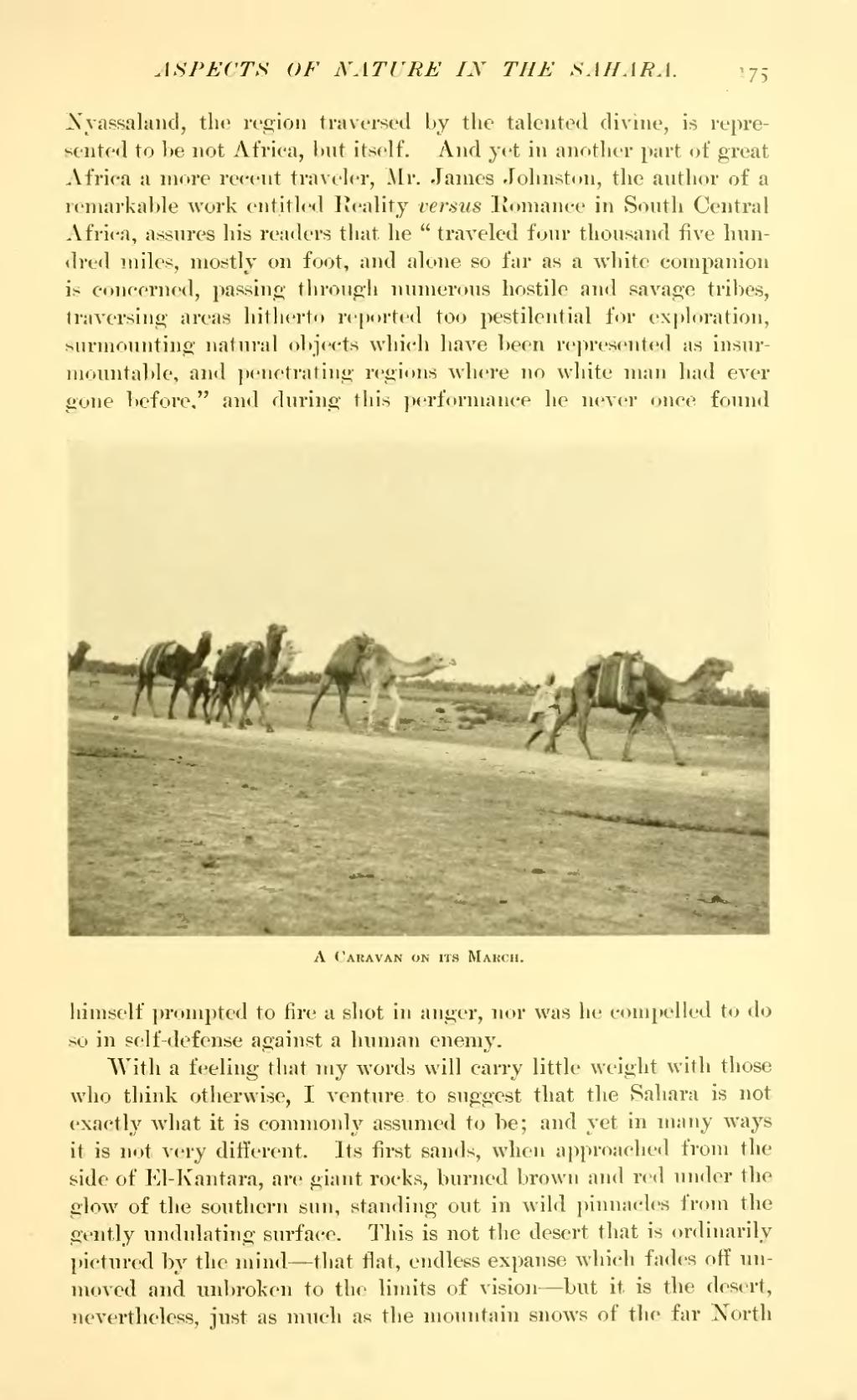Nyassaland, the region traversed by the talented divine, is represented to be not Africa, but itself. And yet in another part of great Africa a more recent traveler, Mr. James Johnston, the author of a remarkable work entitled Reality versus Romance in South Central Africa, assures his readers that he "traveled four thousand five hundred miles, mostly on foot, and alone so far as a white companion is concerned, passing through numerous hostile and savage tribes, traversing areas hitherto reported too pestilential for exploration, surmounting natural objects which have been represented as insurmountable, and penetrating regions where no white man had ever gone before," and during this performance he never once found

A Caravan on its March.
himself prompted to fire a shot in anger, nor was he compelled to do so in self-defense against a human enemy.
With a feeling that my words will carry little weight with those who think otherwise, I venture to suggest that the Sahara is not exactly what it is commonly assumed to be; and yet in many ways it is not very different. Its first sands, when approached from the side of El-Kantara, are giant rocks, burned brown and red under the glow of the southern sun, standing out in wild pinnacles from the gently undulating surface. This is not the desert that is ordinarily pictured by the mind—that flat, endless expanse which fades off unmoved and unbroken to the limits of vision—but it is the desert, nevertheless, just as much as the mountain snows of the far North
